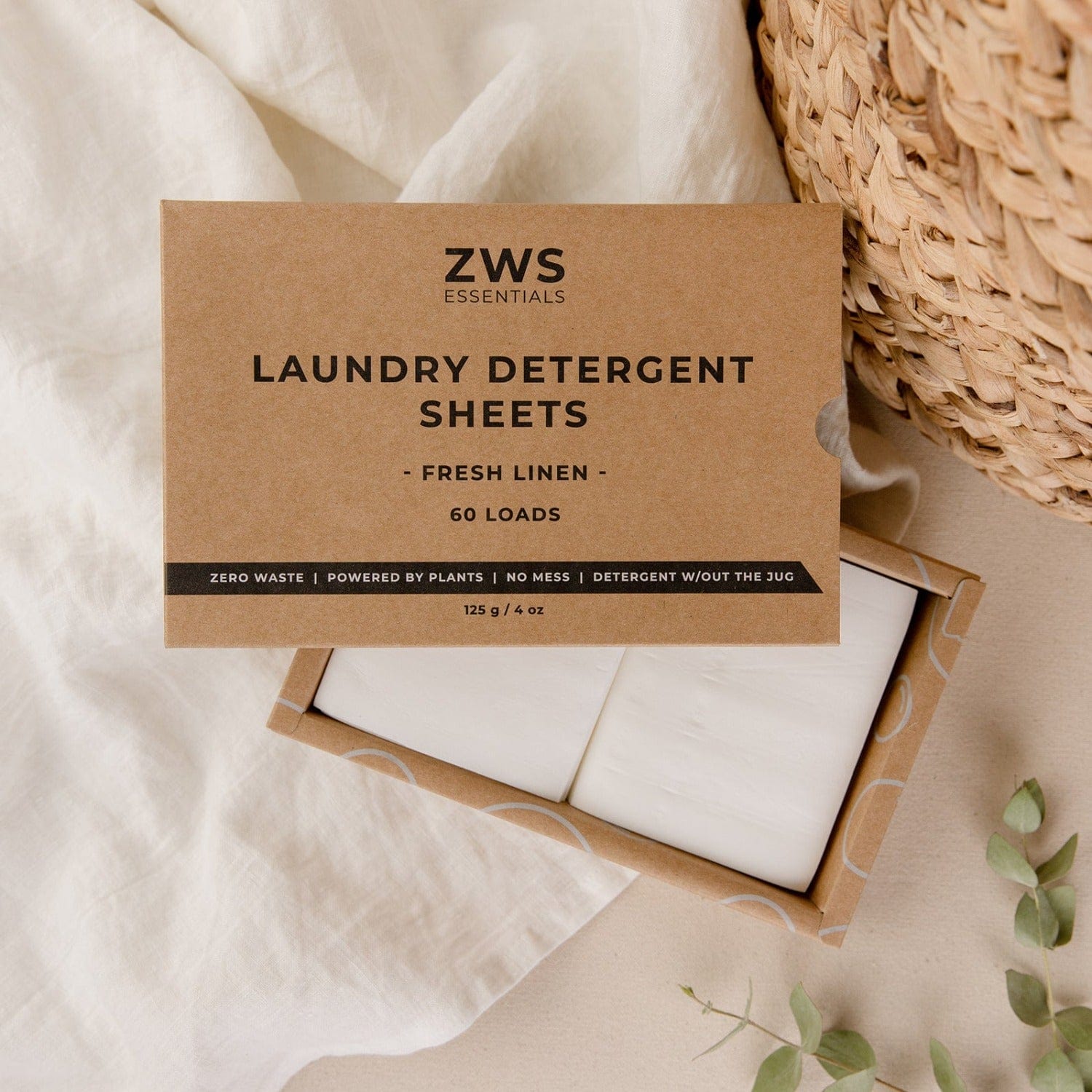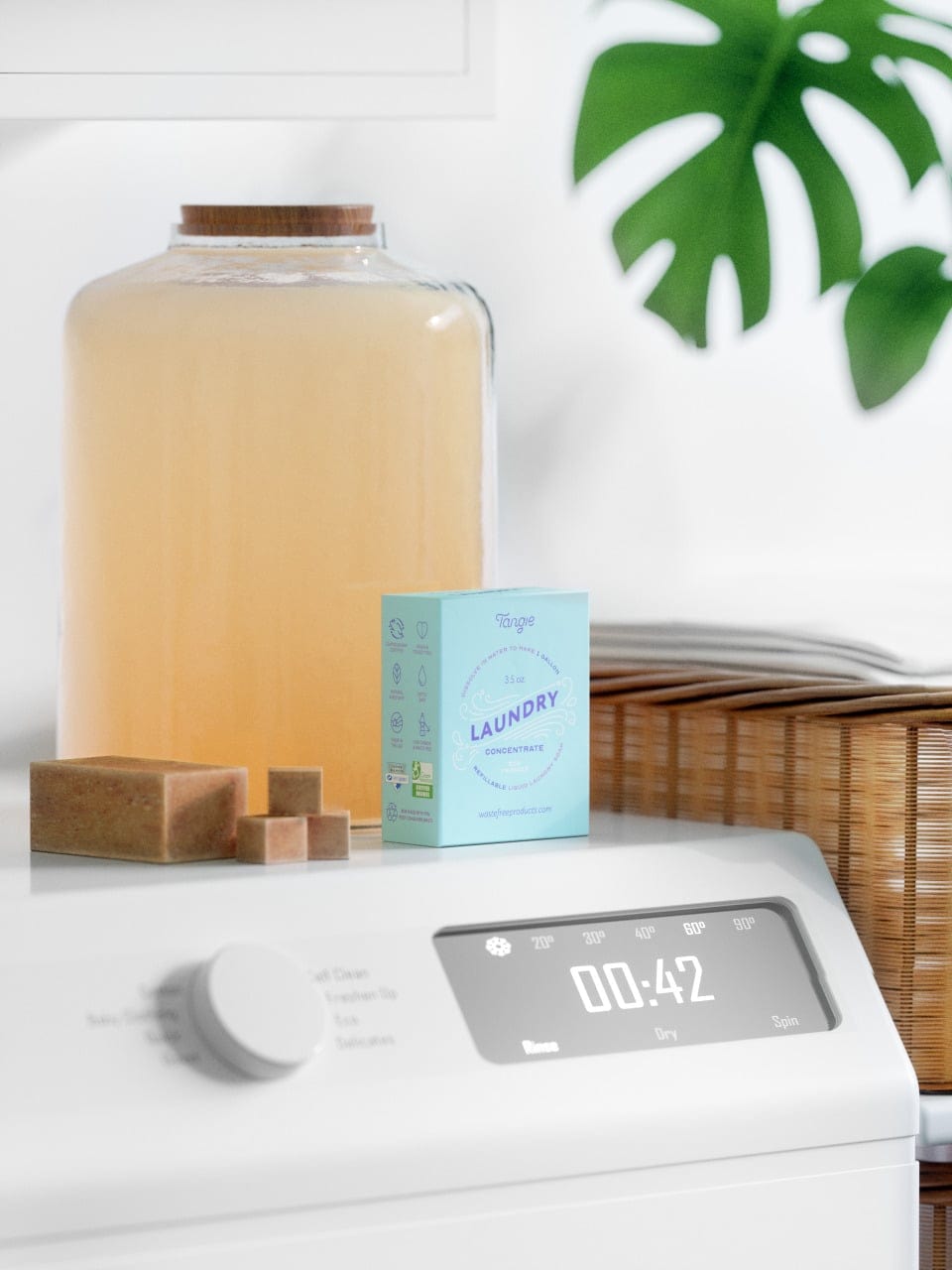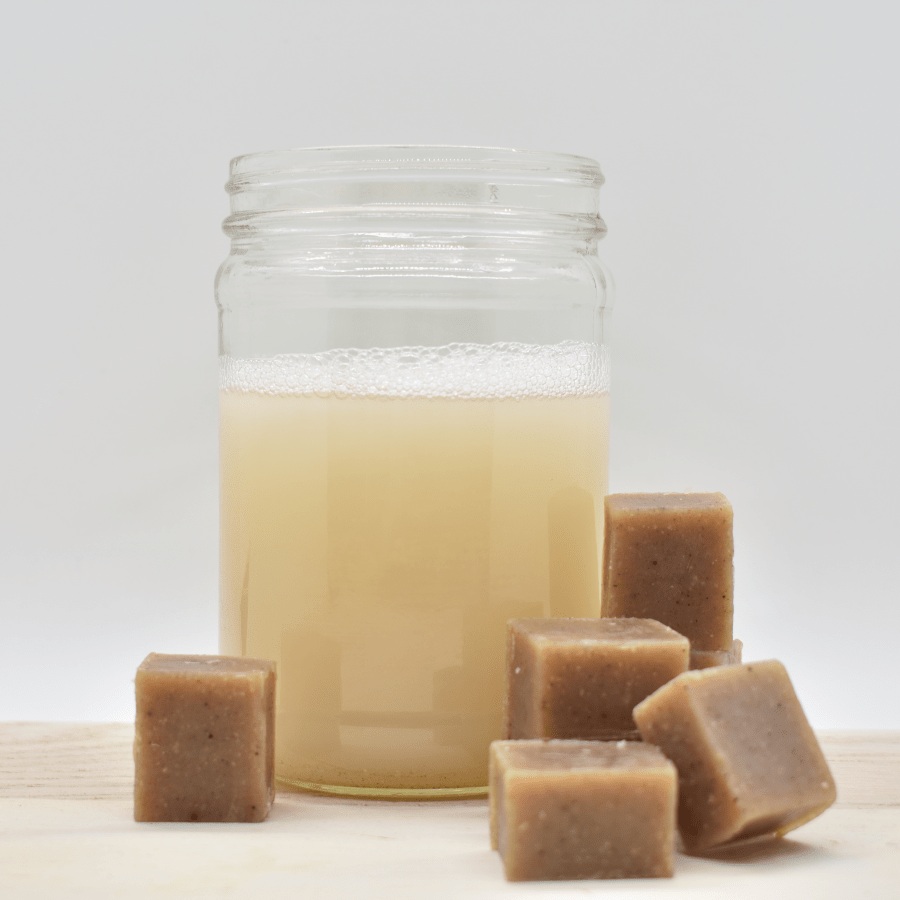Without Zero Waste Laundry Detergent, You’re in Loads of Danger

Caution! Hazardous Load
For something that cleans so well, it’s probably hard to believe that your laundry detergent is might be dirtying up your health and the environment. The truth is, most conventional detergents come chock-full of potentially harmful chemicals. But in a world where so many products found on store shelves are teeming with toxins, why exactly should this be a concern to you?
Well, let's consider a few things...
- Your skin is porous and is designed to absorb whatever you put on it, including toxic chemicals that it comes into contact with.
- Laundry detergent, and the chemicals in them, is used to wash fabrics that you touch every day. This includes your clothes, towels, wash cloths, bed sheets, and pillowcases.
- Peer reviewed studies have shown our bodies to have a 100% absorption rate for fragrance ingredients, and absorb an average of 64% of total contaminant dosages.
- Some body surfaces are more permeable than others, with the armpits and genitalia having a 100% absorption rate.
- Of 550 products and 100 brands of general purpose laundry detergents used in a safety study, the Environmental Working Group gave failing grades to nearly 70% of them.
- Laundry detergent manufacturers are not required to list their full list of ingredients due to “trade secrets” protections.
- The dangerous chemicals and toxins in your laundry soap leach through the soil and into our water systems every time you use them.
- Of the roughly 1 billion laundry detergent jugs are used and discarded every year in the U.S., only 30% of them are recycled. The other 70% are sent to landfills, or escaping into our oceans and our waterways.
- Plastic water jugs are made from high-density polyethylene (HPDE) that can take over 1 million years to completely break down.
A Laundry List of Toxins
Synthetic Fragrances
Laundry detergent fragrances contain a mixture of roughly 4,000 chemicals that vaporize and release harmful Volatile Organic Compounds (VOCs) into indoor air, often leading to respiratory system irritation and asthma, among other things. This precarious chemical cocktail may give off a pleasant aroma, but the unpleasant reality is that the hazardous substances derive from, like tar coal and petroleum, are the types of ingredients that are classified as neurotoxins, carcinogens, hormone disruptors, and irritants.
Furthermore, because laundry detergent fragrances are designed to stick to your clothing long after you’ve washed them, these dangerous chemicals can easily be absorbed into your skin and enter your bloodstream–and it’s totally legal! Detergent manufacturers are able to conceal harmful chemicals in their products by simply listing them as fragrance ingredients, which aren’t required to be disclosed due to “trade secrets” laws that protect them.
Brighteners
Brighteners are chemical agents that work by absorbing ultraviolet rays from the sun and shining them back to your eyes, making your whites whiter and more vibrant. In terms of the cleaning process, however, they don’t actually do anything to remove stains or discoloration. Optical brighteners are simply a clever optical illusion caused by chemicals specifically designed to stick to clothes and linens for a long period of time. The long-term effects of brightening agents to the human body are still unknown, but they can potentially cause skin irritation.
But what we do know is that brighteners don’t biodegrade. This means once it leaches into our water system, it poses a long-lasting threat to aquatic life.
Formaldehyde
Another common toxic ingredient found in detergents (and dishwashing liquids) is formaldehyde, an inexpensive preservative and antibacterial agent that can cause skin, eye, nose, and throat irritation. Formaldehyde is also a carcinogen, and exposure to it has been linked leukemia and other types of cancer.
Bleach
Chemical bleach, or sodium hypochlorite, is so commonly associated with laundry, that we often forget just how dangerous it can be to our health and safety anywhere it comes into contact with the body. It can severely burn skin, cause irreparable eye damage, trigger acute asthmatic or allergic reactions, and can result in organ damage if ingested or inhaled. Exposure to bleach has even also been linked to cancer.
Phosphates
Phosphates increase the effectiveness of conventional detergents by limiting the action calcium and magnesium and softening water. While phosphates do help in getting your outfits looking fresh and clean, the results are much different on the environment when these chemicals accumulate in our groundwater system. In fact, many American states and European nations have outright banned phosphates altogether due to fact that they lead to algal blooms in our lakes and waterways, snuffing out marine organisms and threatening entire natural eco-systems.
SLS and SLES
Sodium Laureth Sulphates & Sodiium Laureth Sulfates (SLS and SLES) are notoriously known to be associated with a wide range of health concerns ranging from organ toxicity and hormone disruption to skin and eye irritation, and often implicated in skin conditions such as eczema, rosacea, and psoriasis. The manufacturing process also creates highly toxic 1,4 dioxane by-product for a double-whammy!
1,4-Dioxane
1,4-Dioxane is solvent and degreasing agent, and is a commonly used ingredient in detergents and shampoos. Unfortunately, it’s also identified as a human carcinogen. Studies have shown that mice who had been exposed to 1,4-Dioxane can develop benign and malignant tumors. It’s a dangerous toxin that readily leaches into our soil and groundwater, contaminating our municipal drinking water, but is also easily absorbed through the skin or inhaled into the lungs.
Nonylphenol Ethoxylate
This non-biodegradable chemical is highly toxic to marine organisms, and accumulates and remains in our groundwater and surface water for many years. It’s well known to disrupt the endocrine system in both humans and animals, by mimicking estrogen to the point that our brain is unable to tell the difference between the chemical and the hormone, wreaking havoc on our bodies.
This is just a fraction of a long list of dangerous chemicals commonly used in household laundry detergents all across America. We could go on and on (and on, and on, and on), but you probably get the picture by now. Unless you’re laundering your clothes with a zero waste detergent right now, you are putting your health, and the health of the planet, at great risk.
Green Solutions to Laundry Pollution

Laundry is a never-ending story. And for the planet, the statement couldn’t be more literal. The 1 billion laundry jugs discarded annually in the United States, of which only 30% are recycled, are made from high-density polyethylene (HDPE) plastic that can take over 1,000,000 years to completely break down!
And with over 35 billion loads of North American laundry are done each year, amounting to an average use of 1.4 trillion grams worth of toxic detergent chemicals to be readily absorbed directly into our bodies and released into our environment, it’s crucial that we start cleaning up our act. Below are 3 zero-waste laundry detergent alternatives to keep our bodies safe from harmful chemicals, and our clothes, linens, and planet fresh & clean!
ZWS Essentials Laundry Detergent
These ultra-concentrated laundry soap packs a ton of cleaning power into a tiny, pre-measured strip of easily dissolvable detergent for a convenient way to launder each load. Housed in completely compostable packaging, doing your laundry with these mess-free strips will help reduce the number of plastic jugs that enter landfills each year.
Home Farm Laundry Detergent
Specially formulated from all-vegan ingredients that effectively deodorizes, softens, whitens, and cleans your clothes and linens, each reusable glass bottle of this eco-safe laundry soap is made to be gentle on the planet and on sensitive skin.
Laundry Paste
Planet-safe, and budget-friendly, this soap concentrate-to-liquid detergent bar can be easily dissolved, using the same container over and over, allowing you a plastic-free way to wash up to 256 loads of laundry with just one single bar.






















